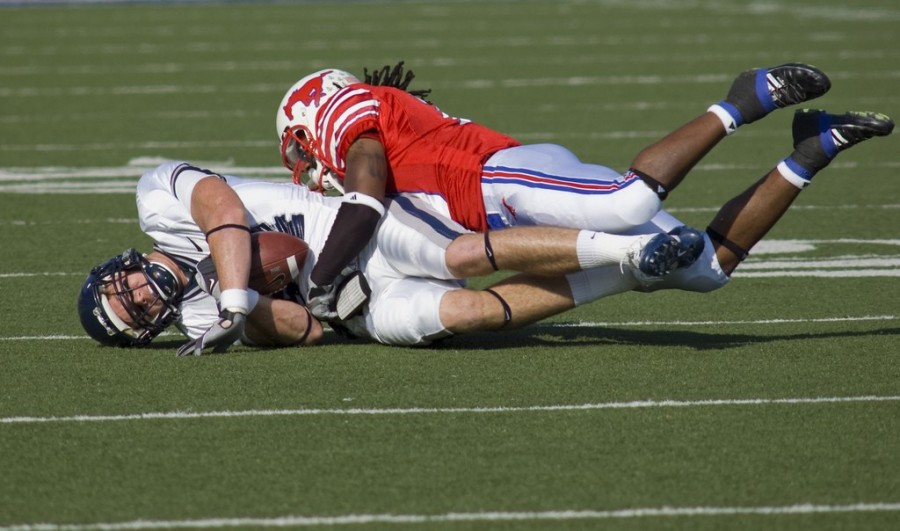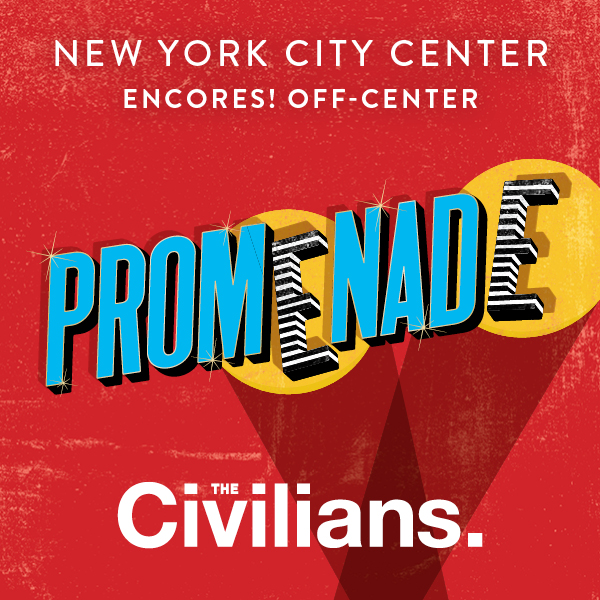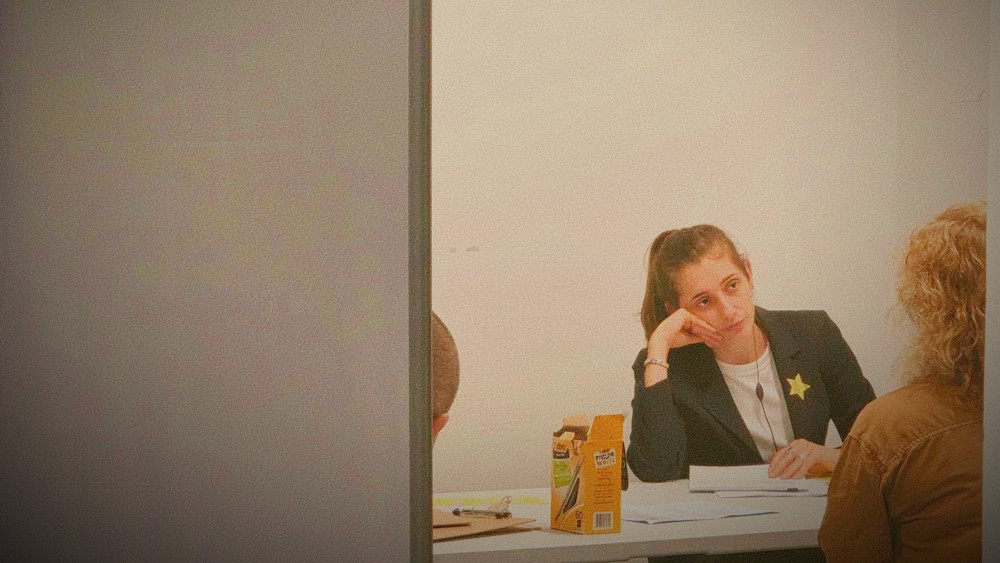KJ Sanchez is a playwright, director and founder/CEO of the production company American Records. Her play “ReEntry,” based on interviews with US Marines and their families, has toured to theaters and military sites across the country since 2010. She is currently developing “X’s and O’s” — a piece about the NFL concussion crisis — from interviews with former professional football players. It premiered at Berkeley Rep in January 2015. KJ spoke with the Civilians’ Literary Associate Megan McClain about her increasingly complicated relationship with football and how her writing serves to connect people.
MEGAN MCLAIN: How did your writing process develop?
KJ SANCHEZ: I’ve been making interview-based plays for quite a while now. The play that I’m best known for is “ReEntry,” which Emily Ackerman and I did based on interviews with Marines returning from Iraq and Afghanistan. So the first thing that happened, Tony Taccone, who is the artistic director at Berkeley Rep, read “ReEntry.” And he gave me a call and said that he really liked the script. And he particularly liked the way that we had compiled and edited the material. He thought we had done a good job of taking a lot of disparate things and shaping it into one event. I remember that. I also remember that he was a big sports fan.
I was at a Cinco de Mayo party at a friend of mine’s house in Brooklyn about two years ago. It was right after Junior Seau killed himself. He was a football player for the San Diego Chargers. Very beloved player, like, the gentlest guy off the field. He could have run for mayor in San Diego and won. He had all of these charities and all these wonderful things for kids in San Diego. And then he had these severe personality changes. He started losing a lot of money. And ultimately he put a bullet through his chest and killed himself. It was a tipping point for a lot of fans. I would sit and watch football. I really enjoy it as a sport, but for a lot of fans that was the tipping point. First, Dave Duerson had killed himself by shooting himself in the chest. Dave Duerson left a note that said, “Study my brain.” And Junior Seau also shot himself in the chest. He didn’t leave a note but the suggestion with that action was that he wanted to leave his head. He perhaps knew that there was something going on in his head.
Anyway, I was at that Cinco de Mayo party, and I ran into my friend Jenny Mercein. She and I had worked together years ago. We were talking about football and just saying, “Wow, it’s not going to be the same sport in 15 years.” And she said, “Well you know my father was a professional football player.” Her father played for the Green Bay Packers, the Giants and the Washington Redskins. It just sort of dawned on us at the exact same moment. I have this company, American Records, and our mission is to make theater that chronicles our times. I thought, “God, this is a moment in our time that really needs to be captured, because the game is going to change.” In whatever direction it changes, I think that most people would agree it’s going to change. So it seemed pretty logical that this would be a good opportunity to make a play about all the things that were happening with the game related to concussions. Remembering that Tony was a football fan, I just called him out of the blue and said, “I have an idea.”
MEGAN: I know for a long time the NFL denied a link between the game and these brain conditions. Did you come up against any resistance as you were going through the process of creating the play?
KJ: At this point, the NFL is no longer denying the link. That stuff has been pretty much — well I was going to say laid to rest, but not really. They’re not denying it the way they were when the issue first came out in 1996. When it first came up as an issue, the NFL put a rheumatologist in charge of research, and that tells you everything about how committed they were to researching it. What’s interesting right now — from what I’ve heard from researchers in places like the Brain Bank in Boston, where they are studying the brain — the NFL is taking more steps than any aspect of American football, many more steps to protect the players than college or high school. One physician told me that the NFL is the safest place to be if you’re a player right now.
All that aside, I did get a lot of resistance. I went into it pretty cavalierly, thinking, “I successfully embedded with the Marine Corps, surely I can get anybody to talk to me.” It was really impossible to talk to players who are playing right now. I reached out and got close to talking to people like John Madden’s secretary. At first they were interested, but as soon as they started to check me out a little bit everything stopped. I don’t think that says anything about me, but everybody who has a vested interest right now is really careful about talking about things, because there’s so much litigation happening right now. People are afraid. But the people who really wanted to talk were the players who were retired, and their wives. The wives of players who had killed themselves, these women have not been talked to a lot. They have not gotten the same publicity as players who have been going on “ESPN Live” with early onset dementia. So they immediately were completely candid and amazingly generous with their time. The former players — the guys who played in the 70’s and the 80’s — it was not hard to get them to talk to us at all. So I decided to make that an asset instead of a problem. The show became about the perspective of the former players, which has been helpful, because they have a much wider lens and perspective about the history of the game. They are also the ones right on the precipice every day, when they can’t remember where they put their keys. They’re thinking, “Uh oh, is this brain damage, or is it just, ‘I’ve got too much on my mind, and I can’t find my keys?’”
Early in the process, I knew the play could not be an exposé in any way. The nature of playmaking, we were always going to be behind the times. And the news is covering this very, very well. There are great reporters covering this extensively. First, I was in a panic. I went through a rough year thinking, “How in the world am I going to make a play out of this, because I don’t have anything new to offer?” But then I made a rule for myself: It’s not going to be an exposé. I’m not here to expose the treatment of the players by the NFL. I’m not here to expose the truth behind the lies sort of thing. It became about tracking the growth and the history of football as it relates to who we are as Americans, how the game affects our culture and, at the same time, exploring what those personal experiences are. The players who are not the hall-of-famer guys, average joe players. One player told me, “When a hall-of-famer goes on ESPN to say he has Alzheimer’s, everybody cares. But when I get sick, nobody’s going to give a shit.” Those were the people I was interested in.
MEGAN: It seems like the theater is the perfect place for this story. The theatricality opens up a space for that personal discussion that might not be in the news or be part of a documentary.
KJ: Yeah.
MEGAN: Did you find out anything surprising as you were conducting these interviews?
KJ: I suppose I always knew this, but we all want to believe that football players are magically gifted. And one of the revelations is how much true, focused, good, hard work it takes to be that exceptional. Hours of studying playbooks. And the hours each day you have to prepare your body in so many different ways — speed, agility and coordination. The level of training it takes — I don’t think everyone can commit that much to what they want to do in life. I found that overwhelmingly impressive. Also, the number of surgeries these men have after their careers. I interviewed someone who had 67 surgeries. And most of them have at least more than a dozen surgeries in their lifetime. On average, I’d say it’s somewhere between 20-30 surgeries. So just the level of impact to the rest of your life. Your knees, your hips — I met a player who just had double knee replacement surgery — your back, your neck, beyond what goes on with your brain.
The other thing I found interesting was how many of them were leaving their brains in their wills to be studied. When they were kids, they were getting letters from colleges. Colleges were scouting them in their teens. And now, three different universities send out letters to these players asking them to donate their brains to the institution when they’re gone. I found that pretty compelling.
I thought this piece would renew my interest in football. After getting to know them, I’d be like, “Yay football!” But it’s made it really hard to watch. Now that I truly know the cost, it makes it hard to watch.
MEGAN: At the end did you draw any conclusions about where the responsibility might lie when it comes to protecting players? Is it with the NFL? The players? The fans?
“I don’t have an interest if I know exactly how I feel about it.”
KJ: My job was to create this play and allow people to come to their own conclusions. But my personal understanding is that it’s us. For example, in the early days of football on television — in the 60’s — players had just one bar or two bars on their helmets. Their helmets were light, a very thin thing. At the time, they were not that big. Players didn’t consider their heads at risk. One of the reasons the helmets got bigger and there were more bars across the face was because players were getting broken noses, broken cheekbones. Not life-threatening or life-impacting injuries, but bloody and messy and not good television. And so our desire to sanitize the game, you know, “We don’t want to see people bleed, so let’s give them more protection.” But at the same time, making that helmet bigger and better made the players feel invincible. That’s when they started turning themselves into human javelins, and using their heads as battering rams. So we put more padding on them so they could hurt each other more. And that’s us, you know? That’s totally us. It’s not like we made that decision, but you know what I’m saying.
It’s the same thing with boxing. We didn’t like to see all that blood. If players didn’t put on gloves, Muhammad Ali would not be in the straights he’s in now. If they boxed with their bare knuckles, there wouldn’t be that type of brain damage.
MEGAN: Would you talk a bit about how you worked with your collaborator, Jenny Mercein, to create the piece?
KJ: I wanted Jenny as my collaborator because it’s really important to me to have an honest real connection with the community. I’m not there to make a propaganda piece for the community, but it’s really important that anybody from the community can see it and say, “Yes, that is our world.” And so it was important to have someone from the community as a guide in a way. I knew Jenny would be invaluable, and I already trusted her as a collaborator and artist. She did the bulk of the cold calling, because of her last name. She would call people up, and they would immediately go, “Oh! Are you Chuck Mercein’s daughter?” Immediately people trusted her.
MEGAN: I’d love to hear a little bit more about American Records.
KJ: It all started because of the Civilians. I guess it was 10 years ago that I made my first piece, right around the birth of the Civilians. I did a couple of the early shows. It was really impactful to learn how to cultivate an interview. And so much of what I do to this day is what I learned from Steve, who learned it from Joint Stock. It was a great gift to be able to start to understand the art of good listening and the art of asking questions.
When “ReEntry” started to take off, I got a lot of calls from theaters who were interested in doing it. At the same time, someone from the military saw the show when it was running off-Broadway and reached out to me. They were interested in using the play as post-deployment training work for soldiers returning from Iraq and Afghanistan. I quickly put together my own corporation in order to produce those.
“How you hear the play changes when you hear it with other people.”
The craziest part of this is I now contract with the Department of Defense. We travel with the video and sound design, and we do load-in very quickly on these bases. All they know when they show up is that they are there for post-deployment training, and then they walk in and find out they’re there to see a play. We perform the play, and then afterwards I lead a discussion. I ask them if there were any characters in the play they could identify with, and if so, could they talk about their own experiences. And then I ask them if they were to write “ReEntry 2.0” based on their experiences, what else should get put in the play. And so they start talking about their own war experiences. At the end of the day, they sort of get passed off to chaplaincy mental health workers. It seems to be a helpful way to get them to talk about their own lives, because what they’re doing is actually talking about the characters in the play, not themselves.
MEGAN: It gives them a way to dialogue about those experiences that feels safe.
KJ: Yeah, exactly. So I’ve learned that that’s part of the mission of American Records. Every show that we do has to have an aspect like that to serve the community in a really direct way.
MEGAN: Do you have a sense of whose stories you’re trying to tell and which communities you want to serve? How do you find those communities, and what is your thought process before you reach out?
KJ: Basically, I pick projects that I think are complicated enough and have many sides so I can end up questioning my own political agenda. For instance, I haven’t had any interest in doing a play about gun violence or immigration. A couple of theaters have asked me if I would be interested in making a play about immigration. I don’t have an interest, because I know exactly how I feel about it. If I were to make a play about it, it would just be agitprop. One of the reasons I’m so proud of “ReEntry” is the politics in the play are grossly in contrast with my own personal politics. It was my job to represent that community’s politics and not my own. I didn’t want to make an anti-war play, because that was less interesting to me than actually listening to people who really love what they do.
The second part of our mission is to create theater that serves as a bridge between people. And I think that’s what theater does, particularly documentary or investigative theater. It’s the most beautiful bridge between people. So I can come and, in a beautiful, well-crafted, artistic and entertaining way, get a glimpse into other people’s lives. It goes way back to Studs Terkel. Everybody has a beautiful story to tell, as long as you take the time to listen. It helps balance us as human beings. It’s really important to get outside of ourselves in this age of the selfie, where everything’s about me. It’s a great chance to see not a play about you, but a play about them. The difference between documentary theater and documentary film or radio programs is the shared communal experience. It’s like church in that way. It was really important to me when I’d sit in the audience of “ReEntry” and see a military person sitting shoulder-to-shoulder with a civilian, a peace activist sitting next to a Marine Corps general. We’re all listening to the story together. We don’t get a lot of communal experiences in our lives. If you don’t go to a church or go to a sporting event, this is one of the only other chances to get that group experience. How you hear the play changes when you hear it with other people.
MEGAN: Right, you can sometimes feel people reacting around you even if they’re just breathing.
KJ: I love documentary film, I think it’s one of the most perfect art forms, but it’s an individual experience. When actors are there live and everything is shared, never to be recreated again exactly the same way, those are all the things that make theater so good.
 As a playwright, KJ Sanchez’s work has been produced at Asolo Rep, Actors Theatre of Louisville, Two River Theater Company, Baltimore’s Center Stage, Round House Theatre, Cornerstone Theater Company, Chicago’s Yo Solo Festival, Annenberg Center for the Performing Arts, Hopkins Center for the Arts, HERE Arts Center and Off-Broadway at Urban Stages Theater. Directing credits include Studio Theatre in DC, Cincinnati Playhouse, Milwaukee Rep, Round House Theatre, Two River Theater Company and Actors Theatre of Louisville. KJ is also the voice of many characters on the Nickelodeon cartoons “Go, Diego, Go!” and “Dora the Explorer.” She is a Fox Fellow, Douglass Wallop Fellow and recipient of the 2014 Rella Lossy Playwright Award.
As a playwright, KJ Sanchez’s work has been produced at Asolo Rep, Actors Theatre of Louisville, Two River Theater Company, Baltimore’s Center Stage, Round House Theatre, Cornerstone Theater Company, Chicago’s Yo Solo Festival, Annenberg Center for the Performing Arts, Hopkins Center for the Arts, HERE Arts Center and Off-Broadway at Urban Stages Theater. Directing credits include Studio Theatre in DC, Cincinnati Playhouse, Milwaukee Rep, Round House Theatre, Two River Theater Company and Actors Theatre of Louisville. KJ is also the voice of many characters on the Nickelodeon cartoons “Go, Diego, Go!” and “Dora the Explorer.” She is a Fox Fellow, Douglass Wallop Fellow and recipient of the 2014 Rella Lossy Playwright Award.
Author
-

Megan McClain is the R&D Program Director for the Civilians and leads the writers, directors, and composers of the R&D Group. As a former Civilians Literary Associate, she worked on "The Way They Live" and "The End and the Beginning" at The Met. She is a staff member at The Lark and also serves as the Resident Dramaturg for Superhero Clubhouse, an ensemble creating original works at the intersection of ecology and theater. She has developed new theatrical work presented during artist residencies granted by The Metropolitan Museum of Art, The Drama League, NACL Theatre, Catwalk Institute, Stony Brook University, Lacawac Sanctuary, and the Lower Manhattan Cultural Council. She has provided dramaturgical support and literary work for productions and projects at numerous organizations including The Goodman Theatre, Disney Theatrical, Hartford Stage, PoNY, Playwrights Realm, The Lark, LMDA, Target Margin, Jewish Plays Project, New Georges, PlayPenn, and American Players Theatre. M.F.A Dramaturgy: University of Massachusetts Amherst.
View all posts










